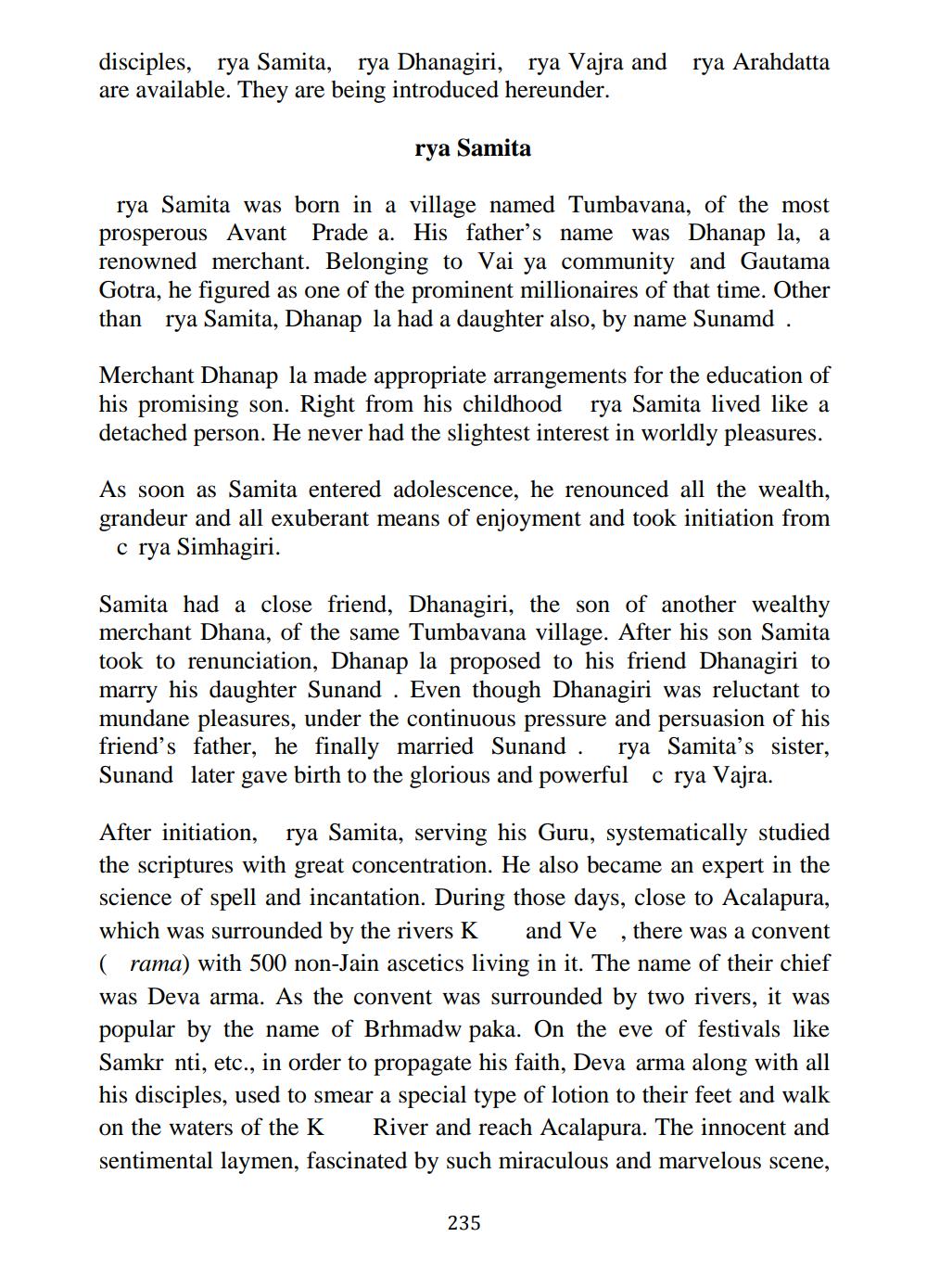________________
rya Arahdatta
disciples, rya Samita, rya Dhanagiri, rya Vajra and are available. They are being introduced hereunder.
rya Samita
rya Samita was born in a village named Tumbavana, of the most prosperous Avant Prade a. His father's name was Dhanap la, a renowned merchant. Belonging to Vai ya community and Gautama Gotra, he figured as one of the prominent millionaires of that time. Other than rya Samita, Dhanap la had a daughter also, by name Sunamd .
Merchant Dhanap la made appropriate arrangements for the education of his promising son. Right from his childhood rya Samita lived like a detached person. He never had the slightest interest in worldly pleasures.
As soon as Samita entered adolescence, he renounced all the wealth, grandeur and all exuberant means of enjoyment and took initiation from
c rya Simhagiri.
Samita had a close friend, Dhanagiri, the son of another wealthy merchant Dhana, of the same Tumbavana village. After his son Samita took to renunciation, Dhanap la proposed to his friend Dhanagiri to marry his daughter Sunand . Even though Dhanagiri was reluctant to mundane pleasures, under the continuous pressure and persuasion of his friend's father, he finally married Sunand. rya Samita's sister, Sunand later gave birth to the glorious and powerful c rya Vajra.
After initiation, rya Samita, serving his Guru, systematically studied the scriptures with great concentration. He also became an expert in the science of spell and incantation. During those days, close to Acalapura, which was surrounded by the rivers K and Ve , there was a convent ( rama) with 500 non-Jain ascetics living in it. The name of their chief was Deva arma. As the convent was surrounded by two rivers, it was popular by the name of Brhmadw paka. On the eve of festivals like Samkr nti, etc., in order to propagate his faith, Deva arma along with all his disciples, used to smear a special type of lotion to their feet and walk on the waters of the K River and reach Acalapura. The innocent and sentimental laymen, fascinated by such miraculous and marvelous scene,
235




